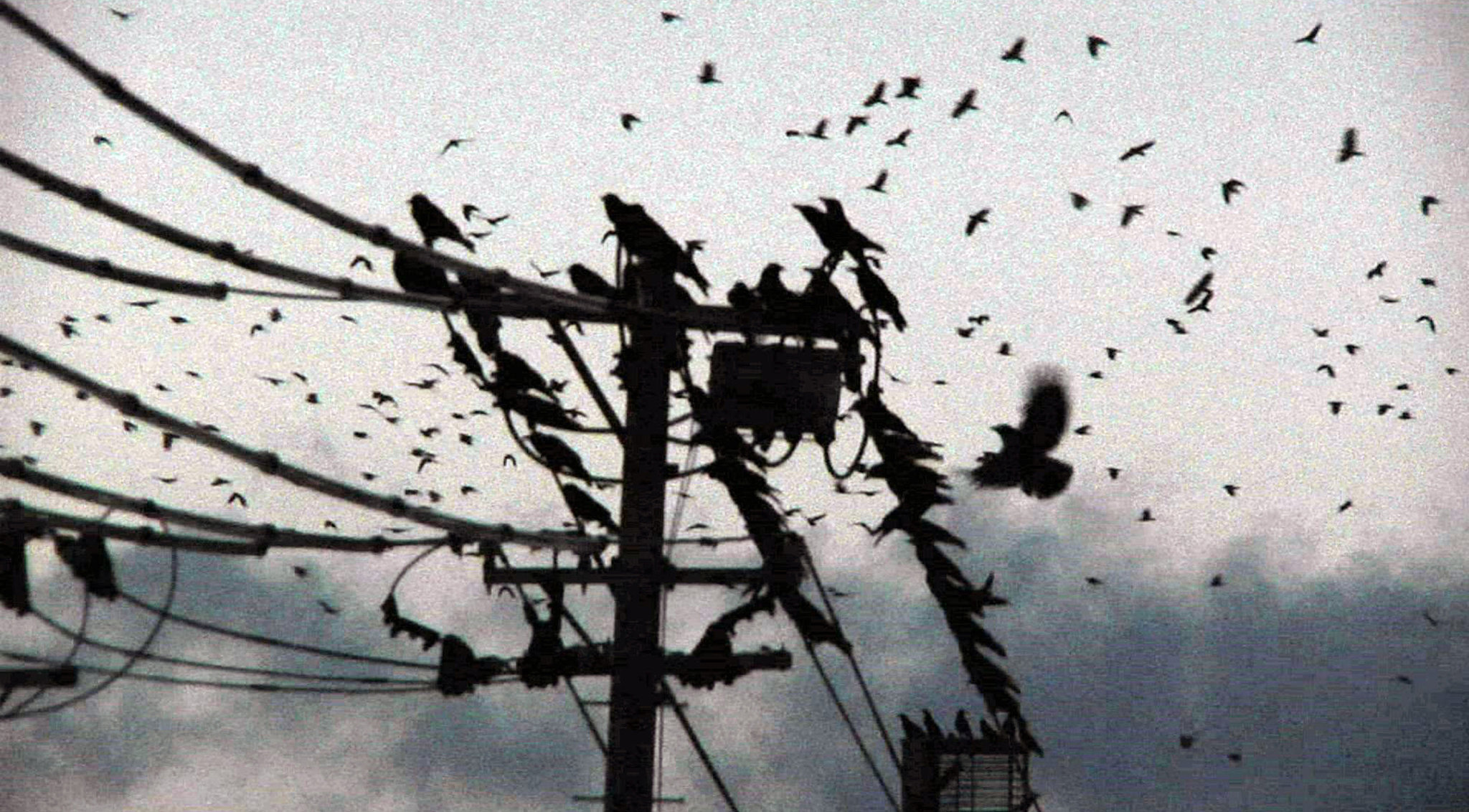By Chlotrudis Independent Film Society
Rating: 3.5 cats
Director: John Haptas | Kristine Samuelson

Country: japan, united_states
Year: 2013
Running time: 63
IMDB: http://www.imdb.com/title/tt2124193/combined
Jason says: “It’s not uncommon to watch a documentary and say that the scale is in-between the usual levels, neither comprehensive nor truly a broad introduction. TOKYO WAKA at times seems to be around those extremes, covering an extremely specific topic but without a great deal of detail. It’s often pretty and kind of interesting, and that may be all someone wants from a movie about Tokyo which focuses on its crows.
“And Tokyo does have a lot of crows; a city official says that roughly six hundred crow attacks are reported each year, and attempts to reduce that number by capturing and humanely killing them often seem to have the result of making the next generation of these unusually clever birds even smarter. Cities provide them with a dynamic environment for nest-building and scavenging, and an architect suggests a couple of reasons why Tokyo may draw them more than usual: It’s a very three-dimensionally-complex city with many nooks and crannies, and the average residential building has a mere thirty-year lifespan, meaning there are always a great deal of construction sites.
“The engineer isn’t the only person co-directors John Haptas & Kristine Samuelson talk to; there are students, zookeepers, artists, keepers of a Buddhist temple, street-food vendors and a young homeless woman living in the park. Some are experts, some are just people who have encountered crows in their lives, and others just appear to be people that the filmmakers met while living in Tokyo who may have an interesting story to tell. The interviews may not often be particularly revelatory but usually have at least one interesting nugget of information (for instance, I have a hard time imagining a tent city in an American park getting regular mail delivery).
“If a theme emerges during the film’s one-hour running time, it’s the lack of a sharp divide between the urban and natural worlds. Animals in zoos must be protected from predators like which roam the city freely and treated for the emotional problems that arise from their limited, synthetic environment; crows. meanwhile, build their nests out of clothes-hangers and figure out how to use basic tools. There are demonstrations of environmental change causing upheaval in an area’s flora and fauna.
“Samuelson & Haptas don’t seem to be making a particularly strong point about this sort of environmental effect, though; it’s a thing that rather has to be inferred. The film in some way bears the mark of a hobbyist project, with shots that rely on patience as much as design, and cinematography that is not necessarily as crisp as the audience may expect from documentaries whose main purpose is to Show Things. They go off on tangents that don’t necessarily lead back to some central idea. Their experts do not necessarily get a chance to go into depth.
“Which is fine; I enjoyed seeing bits of Tokyo that don’t often show up on film and learning things about the city and its birds that aren’t going to make it into other works. I will admit to feeling an odd sort of disappointment after every scene showing a huge number of crows that doesn’t turn into THE BIRDS, though. 3.5 cats
“Seen 25 April 2013 in Somerville Theatre #4 (Independent Film Festival Boston, digital)”
